10 Judgements That Changed India
By Zia Mody
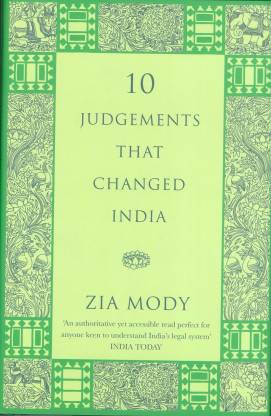
This book presents a compilation of 10 essays on some of the most influential judgments’ that were passed by the Supreme Court of India and proved to be life-altering for the common man and the democracy of the nation. These judgments by the Indian Judiciary proved that the nation’s legal system is not as irresolute as often cited. The author attempts to paint the complete picture of some of the most controversial cases, like Maneka Gandhi versus the Union Bank of India, the Union Carbide Corporation versus Union of India, Mohammed Ahmed Khan versus Shah Bano Begam and Olga Tellis versus the Bombay Municipal Corporation among others.
From the matter of environmental jurisprudence and custodial deaths to the controversial topic of reservations, the author deals extensively with each case in the 10 essays and points out the effects that the Supreme court’s final verdicts produced. The book describes how the Indian judicial system is capable of impacting the lives of the millions that thrive under this democracy and succeeds in restoring the reader’s faith on the legal system of the nation. The internal affairs that go about in each case, which otherwise escape scrutiny, have been shed light on through the book.
The Case That Shook India: The Verdict That Led to Emergency
By Prashant Bhushan
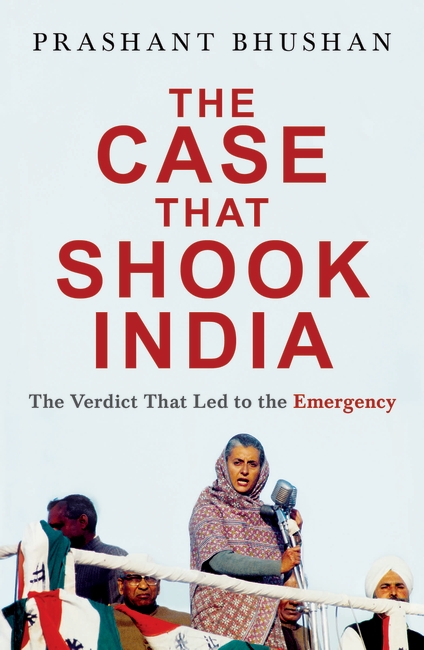
On 12 June 1975, for the first time in independent India’s history, the election of a prime minister was set aside by a high court judgment. The watershed case, Indira Gandhi v. Raj Narain, acted as the catalyst for the imposition of the Emergency. Based on detailed notes of the court proceedings, The Case That Shook India is both a significant legal and a historical document. The author, advocate Prashant Bhushan, provides a blow-by-blow account of the goings-on inside the courtroom as well as the manoeuvrings outside it, including threats, bribes and deceit. As the case goes to the Supreme Court, we see how a ruling government can misuse legislative power to save the PM’s election. Through his forceful and gripping narrative, Bhushan vividly recreates the legal drama that decisively shaped India’s political destiny.
Is Eating People Wrong? Great Legal Cases and How They Shaped the World
By Allan C. Hutchinson

Great cases are those judicial decisions around which the common law develops. This book explores eight exemplary cases from the United Kingdom, the United States and Australia that show the law as a living, breathing and down-the-street experience. It explores the social circumstances in which the cases arose and the ordinary people whose stories influenced and shaped the law as well as the characters and institutions (lawyers, judges and courts) that did much of the heavy lifting. By examining the consequences and fallout of these decisions, the book depicts the common law as an experimental, dynamic, messy, productive, tantalizing and bottom-up process, thereby revealing the diverse and uncoordinated attempts by the courts to adapt the law to changing conditions and shifting demands. Great cases are one way to glimpse the workings of the common law as an untidy but stimulating exercise in human judgment and social accomplishment.
The Dramatic Decade: Landmark Cases Of Modern India
By Indu Bhudan
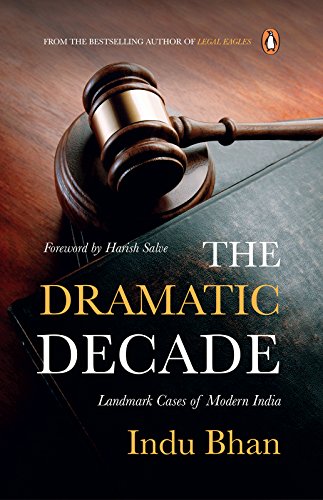
The courts in India are struggling with a huge backlog of cases. As of 2016, there are 27 million pending cases and close to 90 million people are still waiting for justice. To the common man, this is just a number. But some cases have impacted the collective conscious of the entire nation. These include the trial of Afzal Guru, the Nirbhaya case, the criminalization of homosexuality, the Parliament attack case, the Babri Masjid demolition and the 26/11 Mumbai attacks.
There was a lot that happened inside the courts during these trials which has remained hidden from public view. The Dramatic Decade is a collection of these stories. The book gives the reader a ringside view of what happened both inside and outside the courts. What were the arguments made, which lawyers fought the cases, what was the court’s judgment and how did it affect the common man are some of the many questions answered here.
Landmark Judgments That Changed India
By A.K.Ganguly
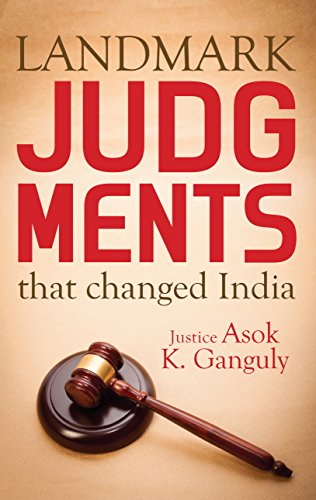
The executive, the legislature and the judiciary are the three branches of government, both state and central, in India. Of these, it is the judiciary’s task to uphold constitutional values and ensure justice for all. The interpretation and application of constitutional values by the judicial system has had far-reaching impact, often even altering provisions of the Constitution itself. Although our legal system was originally based on the broad principles of the English common law, over the years it has been adapted to Indian traditions and been changed, for the better, by certain landmark verdicts.
In Landmark Judgments that Changed India, former Supreme Court judge and eminent jurist Asok Kumar Ganguly analyses certain cases that led to the formation of new laws and changes to the legal system. Discussed in this book are judgments in cases such as Kesavananda Bharati v. State of Kerala that curtailed the power of Parliament to amend the Constitution; Maneka Gandhi v. Union of India and Others that defined personal liberty; and Golaknath v. State of Punjab, where it was ruled that amendments which infringe upon fundamental rights cannot be passed. Of special significance for law students and practitioners, this book is also an ideal guide for anyone interested in the changes made to Indian laws down the years, and the evolution of the judicial system to what it is today.
The Cases that India Forgot
By Chintan Chandrachud
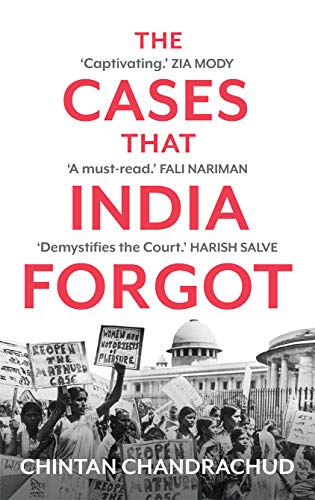
Can a state Legislature imprison a critic and summon a high Court judge to appear before it? Are religion-based personal laws above fundamental Rights? Why did the Punjab police organize a band to celebrate the defeat of the state in a case of sexual harassment? Is it legal for the government to arm untrained private citizens to participate in counter-insurgency operations? How did Parliament come to pass the first Amendment to the Constitution allowing for caste-based reservations? And why did the Supreme Court acquit a rape accused on the basis of the victims sexual history? In this book, constitutional expert chintan chandrachud takes us behind the scenes and tells us the stories of ten extraordinary and dramatic legal cases from the 1950s to the present day that have all but faded from public memory. Written in a lively, riveting style, this book has a cast of characters that includes the who’s who of the Indian legal system. It also paints an unexpected picture of the Indian judiciary: the Courts are not always on the right side of history or justice, and they don’t always have the last word on the matters before them. This entertaining book is an incisive look into the functioning of Indian institutions.

